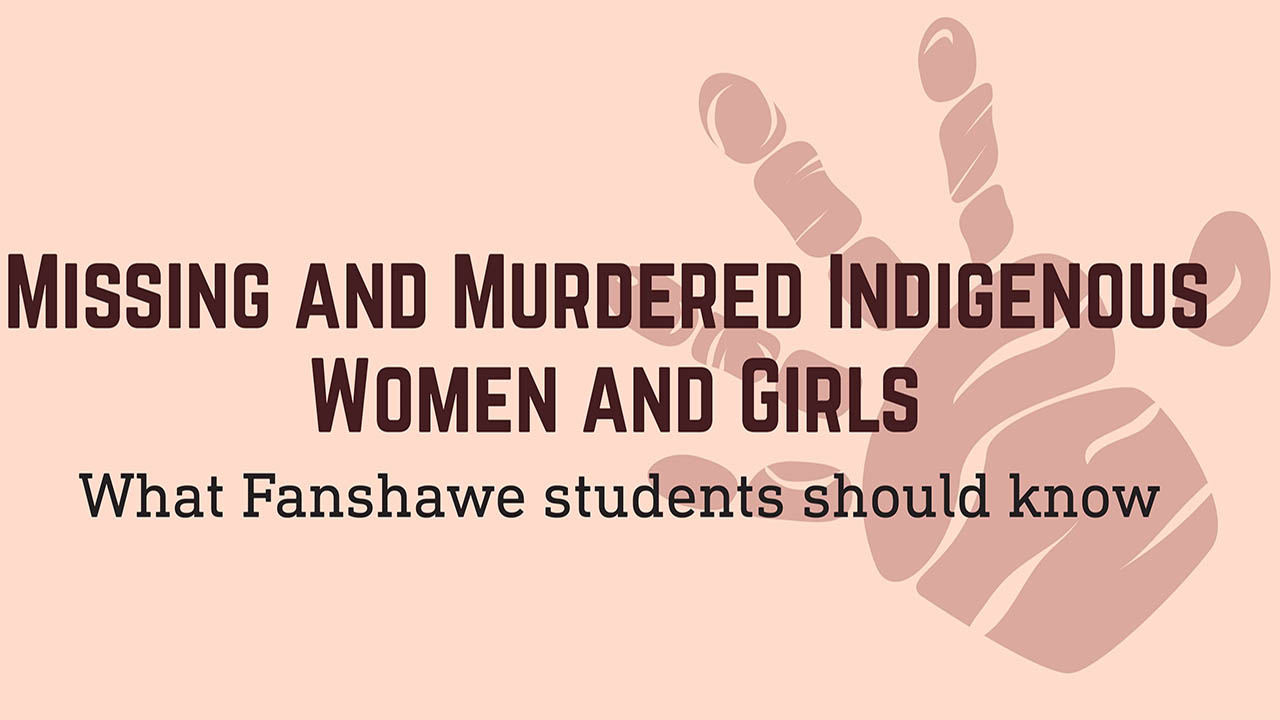Missing and murdered indigenous women and girls: what Fanshawe students should know

A tragic storyline that has been suppressed for too long has been finally spreading awareness among Canadians. In June 2019, the National Inquiry into Missing and Murdered Indigenous Women and Girls (MMIWG) released its final report on the injustices that Indigenous women and girls have faced since the beginning of colonization in Canada. The report releases information that refers to these cases as a genocide.
According to Chris Hannah, a student success advisor in Fanshawe’s First Nations Centre and a Metis person from Drummond Island, 1,300 students that attend Fanshawe College identify as Indigenous. This means that this issue is part of our community, and we have a duty to be aware and report on issues that impact our community.
Though this epidemic has always been a part of Canadian history, it has only become a topic in mainstream media within the last decade. Within Indigenous communities, Hannah says that this issue has been in their collective memories for years. Following release of the inquiry’s final report, Hannah said that the topic has received very mixed media coverage and that controversy has followed the release of updated statistics, including the use of the term genocide.
“There was a lot of debate around the use of the word ‘genocide’ when describing the systematic violence that’s been perpetrated against Indigenous women and girls,” Hannah said. “If anybody has an issue with the use of that term, the inquiry also created a document that justifies the use of that term.”
It has been suggested that the results of the inquiry reflect the reason why the term follows up with controversy. This may be because people get uncomfortable knowing that there is systematic discrimination going on in their own home country.
Hannah explained that there are several suggestions as to what actions the government should be taking to minimize this situation. One is that there should be a sort of rights advocate for Indigenous women, also known as an ombudsman. The ombudsman would be able to make claims of dishonoured rights and point out when the justice system is not being fair to Indigenous people.
Prime Minister Justin Trudeau responded to the report by saying that he would develop a national action plan to address violence against Indigenous women and girls, LGBTQA+ and two-spirit peoples. However, there is the argument that an action plan must also address inequality facing Indigenous men.
“I think that there are a lot of issues that native men deal with, and we should investigate that, maybe we should have an inquiry. But it’s not a valid argument as to why this doesn’t matter because women are also struggling,” said Hannah.
As these nation wide issues are being discussed, it can be easy to overlook what’s happening closer to home. Within London there are about a dozen First Nations communities, many of which have students that go to Fanshawe College. Hannah’s job involves working with students that have been impacted by these missing and murder cases.
“If it’s happening here then it’s your problem. As a Canadian it’s your problem. Even as an international student, it’s happening here and it’s your problem. You go to school with other native students, you go to school with native women. That’s what Fanshawe students need to know,” says Hannah.
If you are interested in learning more about statistics and what you can do to participate in the call to justice for Indigenous women and girls, visit mmiwg-ffada.ca to view the final report. The RCMP also has the most accurate count of recorded cases. Keep in mind that since country boarders do not reflect Indigenous people’s territories that these lists may include cases from both Canada and the United States of America.















